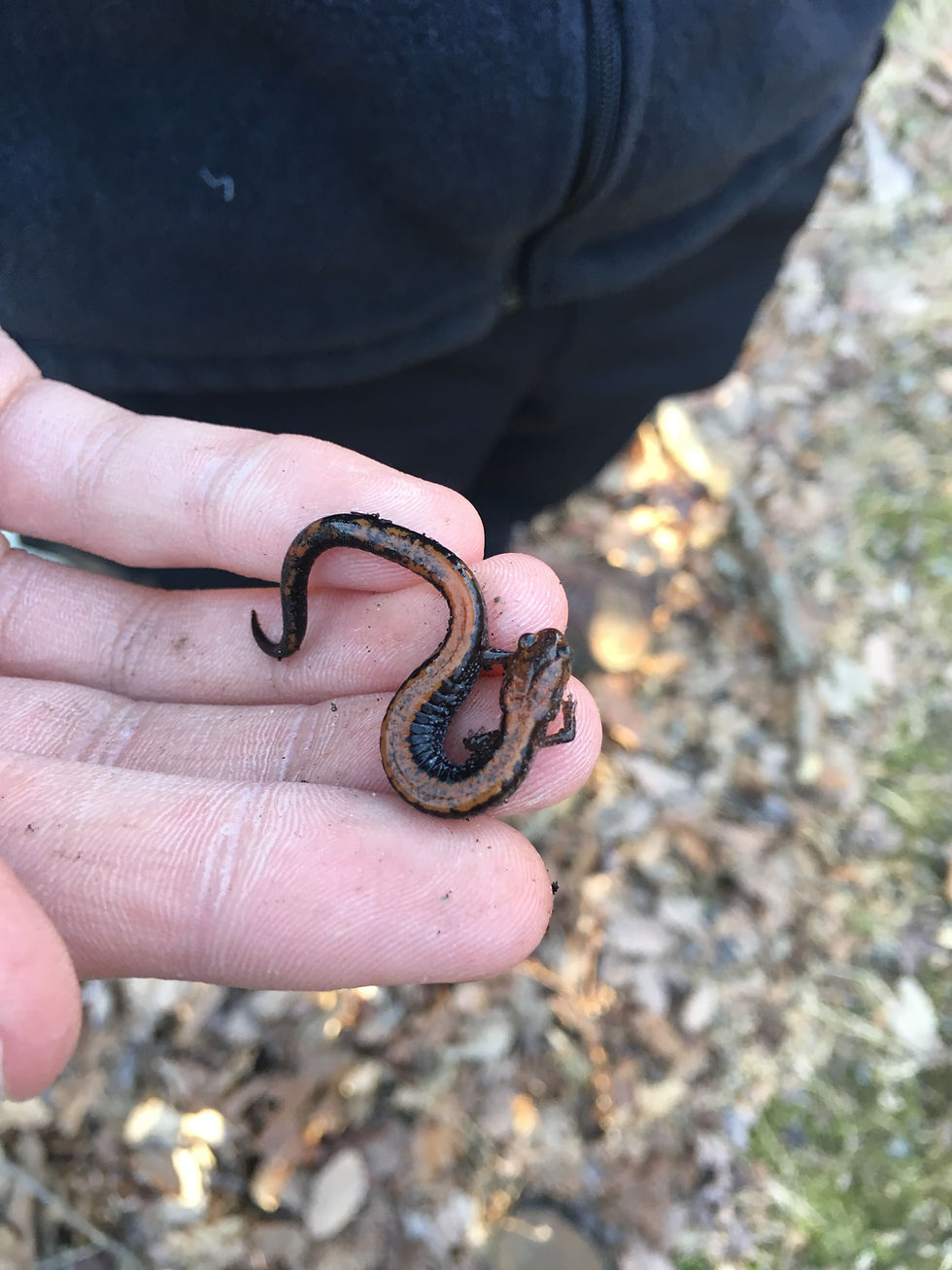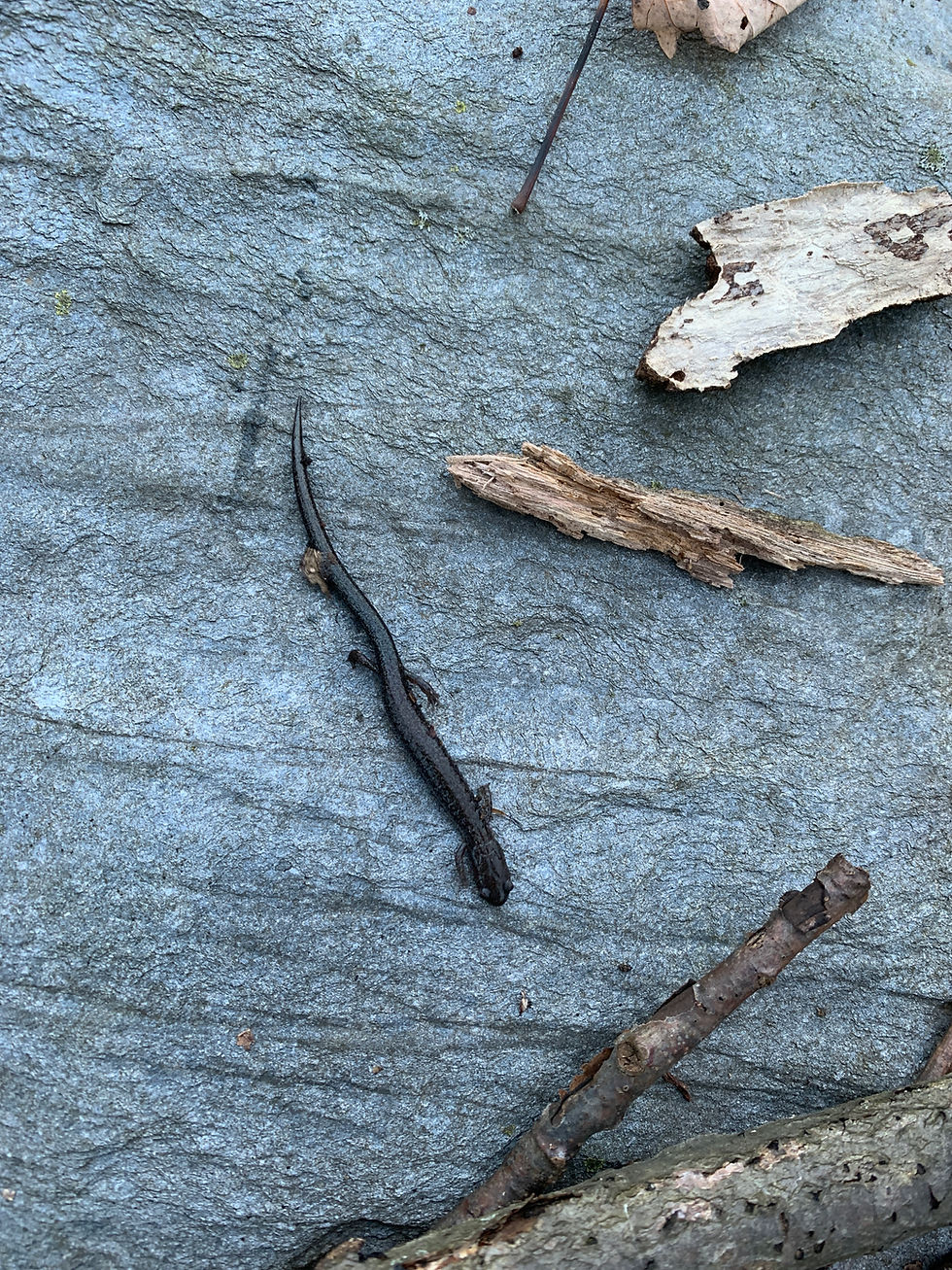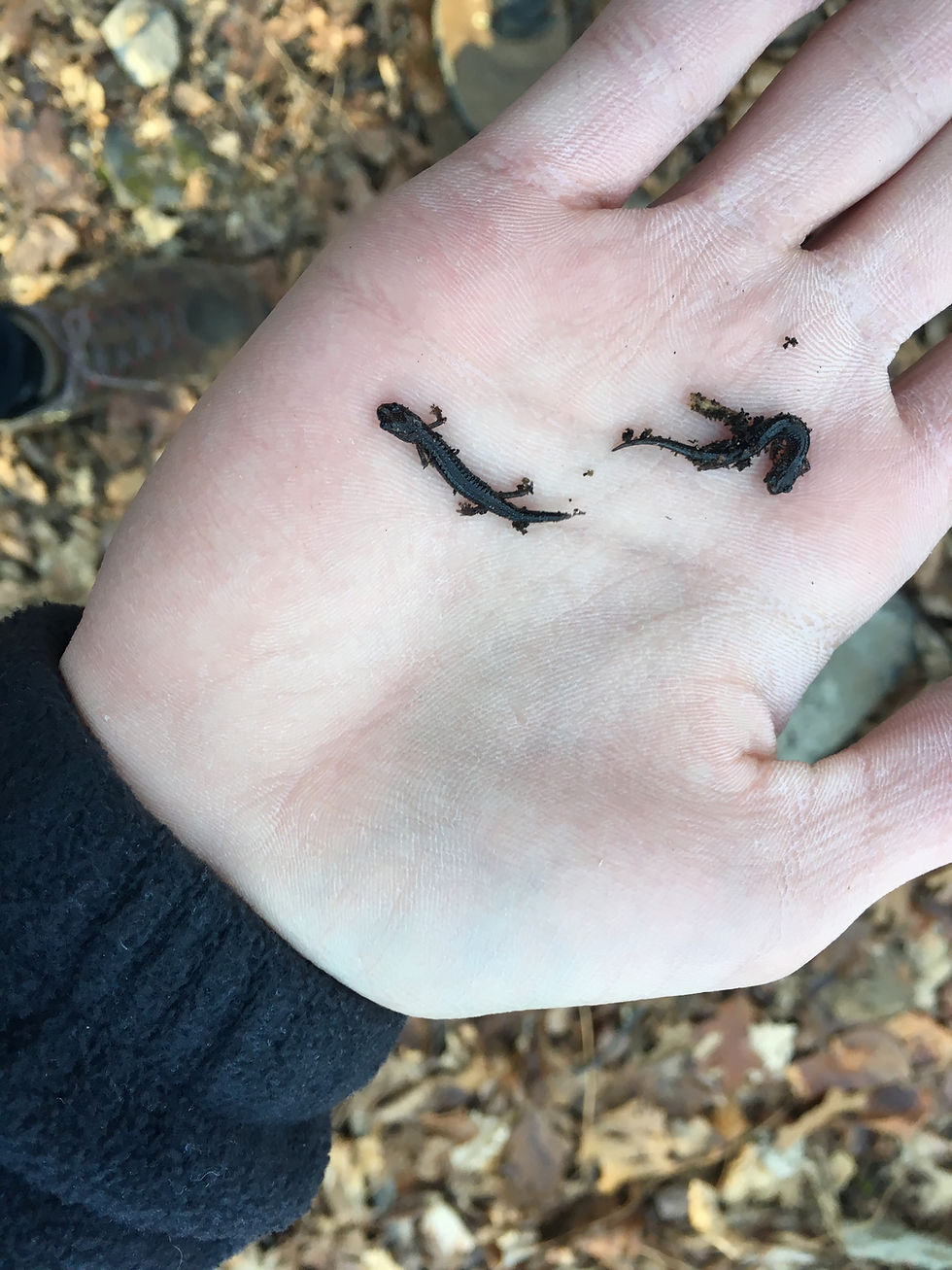First Day of 2020 Maryland Salamander Surprise
- Outdoors Maryland
- Jan 5, 2020
- 2 min read
Updated: Jan 14, 2021
This past semester, I took a college class called “Biodiversity and Conservation.” My professor was an esteemed herpetologist, the founder of the Salamander Lab at the National Smithsonian. With her, I did field work on salamanders, collecting as many as 25 in an area smaller than my bedroom, in the heart of urban Richmond. Salamanders, while hard to find and fragile, can actually be quite common.
On January 1st, I headed to Gambrill State Park to greet the new decade with a hike. The sun was already setting, so I chose the short White Cedar Trail, which happened to have many rocks to flip. It was 40 degrees and dry, not what most people think of when they imagine searching for salamanders. Salamanders are actually much more active in the cold than people think. Five flips in, and I found a pretty striped morph red-backed salamander. Contrary to their name, red-backs can also be a solid chocolate brown, which was the next salamander I flipped. Recent evidence is starting to suggest “leadbacks” may be more common than their striped brethren, a conclusion I confirmed in my small Richmond study. However, it may be that the primary color depends on the habitat.


Red-backs are the most abundant salamander species, tolerant of a wide range of habitats including suburban areas. They could be so abundant that they outcompete rarer species, but this is up for debate.
As the trail descended Catoctin Mountain, I flipped over 40 rocks without a salamander spotting. I noticed a key difference: there were fewer rocks, no moss, and no ground vegetation in the lower elevations as there were in the higher. A very interesting research question. But then things got more interesting. Underneath a piece of bark were two hatchling leadbacks, less than an inch long. When I returned to the same habitat in the high elevation, I found two more adults, both leadback. Why were adults only in high elevation, and juveniles in the low? According to the Virginia Herpetological Society, eggs can hatch as late as September, but these two were still very young. Was there a late hatch?

Although the sample size is small, it seemed as if adults laid eggs at low elevations and returned to high elevations. Is this a trend or a coincidence? I flipped 25 rocks at high elevation and found four salamanders, and probably 80 at low elevation and found two. If the lower habitat was unsuitable for adults, why lay eggs there? Would I have found adults in the lower habitat searching farther from the trail?
I love environmental science because it explains how the world works. I love to ask questions like this, and so far I haven’t found any answers on the internet. I couldn’t have asked for a better hike to start the decade, hopefully a sign of many great things to come.
Click here provide members with discounts on over-the-counter medications, vitamins, and health essentials, promoting better health management and cost-effective wellness solutions. kaiserotcbenefits.com - more details here
Click here help you find recent death notices, providing information about funeral services, memorials, and tributes for loved ones in your area. obituariesnearme.com - more details here
Click here? Many users have had mixed experiences with the platform, so it's important to read reviews and verify deals before booking. istravelurolegit.com - more details here